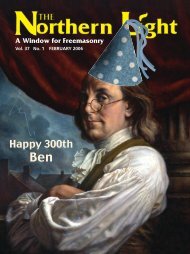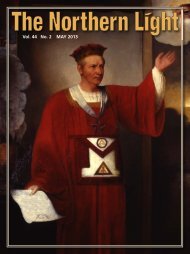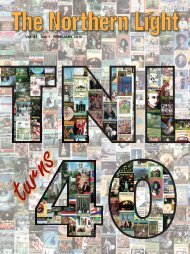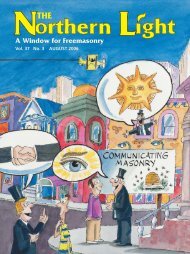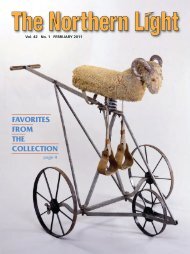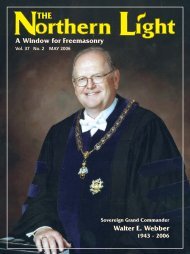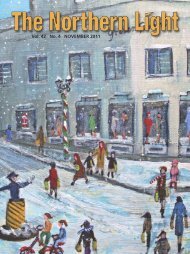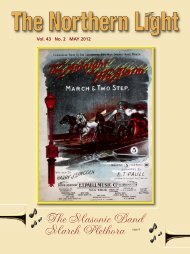The Degree Rituals The Supreme Council, 33 ... - Scottish Rite, NMJ
The Degree Rituals The Supreme Council, 33 ... - Scottish Rite, NMJ
The Degree Rituals The Supreme Council, 33 ... - Scottish Rite, NMJ
Create successful ePaper yourself
Turn your PDF publications into a flip-book with our unique Google optimized e-Paper software.
<strong>The</strong> <strong>Degree</strong> <strong>Rituals</strong><br />
Sublime Prince — <strong>The</strong> Thirty-second <strong>Degree</strong><br />
<strong>The</strong> 32° of the <strong>Scottish</strong> <strong>Rite</strong> had its origin as the 25th and last degree of<br />
the 18th century <strong>Rite</strong> of Perfection and may be traced back to a French degree<br />
that was extant 250 years ago. <strong>The</strong> Francken Manuscript of 1783 did not<br />
record the ritual of the degree, but it did describe a major component, the<br />
symbolism of the camp, disclosed the signs and passwords of the degree, and<br />
provided the motto, then as now, “Spes Mea in Deo Est.” Also then as now,<br />
a person admitted to the degree was styled “Sublime Prince of the Royal Secret.”<br />
<strong>The</strong> earliest surviving ritual of the degree appeared in 1845, or soon thereafter,<br />
in the manuscript of Killian Van Rensselaer. At the time a single ritual<br />
encompassed the 30°, 31°, and 32°. In that portion of the composite ritual associated<br />
with the 32°, set in the period of the Crusades, the candidate was<br />
made a prisoner by Moslems and rescued by Knights Templar. By 1875, perhaps<br />
under the influence of the American Civil War and its veterans’ organization,<br />
the Grand Army of the Republic, the 32° had become a military<br />
degree with a Grand Masonic Army attired in a prescribed Consistory uniform.<br />
<strong>The</strong> rescue of the candidate was made in a dramatic battle scene.<br />
By the turn of the 20th century, however, the military influence had run its<br />
course. Reflecting the changing trend, Ill. John Lloyd Thomas, <strong>33</strong>°, later to<br />
become an Active Member for New York and a member of the Committee on<br />
<strong>Rituals</strong>, proposed a new ritual for the 32°. What Thomas proposed was a dignified<br />
ceremonial with much improved dialogue, and without dramatization.<br />
Adopted as a tentative ritual in 1912, it became the basis of the later ceremonial<br />
section and the current ritual of the 32°.<br />
A few years later, because of continuing interest in a dramatic ritual,<br />
Thomas revised the tentative ritual, separating it into two sections. <strong>The</strong> first<br />
was the ceremonial ritual with the symbolism of the camp, obligation, and investiture,<br />
climaxing in a stirring call to patriotism. This was followed by a<br />
new dramatic allegory, a medieval scene that portrayed the vigil of Constans,<br />
an aspirant for knighthood, who overcame the temptations of personal selfinterest<br />
and ultimately made the supreme sacrifice in the cause of the “Royal<br />
Secret.” <strong>The</strong> new ritual with ceremonial and allegory was approved as the<br />
85




